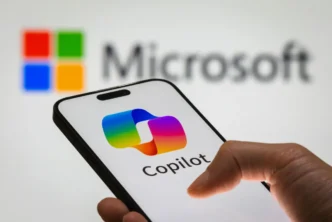Microsoft has unveiled a browser-based demo of Quake II, powered by its Copilot AI platform. Is offering a fascinating — if flawed — glimpse into the future of AI-generated gaming. While you can try it out yourself, don’t expect a seamless retro gaming experience. In fact, even Microsoft admits it’s more of a tech showcase than a playable game.
Using just your keyboard, you can navigate a single level of Quake II for a few minutes before hitting a time limit. The experience is built around Microsoft’s Muse family of AI models. Which are designed to simulate gameplay environments in real time based on user inputs.
In a blog post explaining the experiment, Microsoft’s researchers described Muse as an AI that allows users to “interact through keyboard/controller actions and see the effects immediately, essentially allowing you to play inside the model.” That’s the key phrase — “play inside the model”. Because what you’re doing isn’t exactly playing the original Quake II. It’s more like navigating a hallucinated version of it.
To build this demo, the team trained Muse on a level from Quake II. A game Microsoft has access to through its acquisition of ZeniMax. The AI was able to simulate many familiar mechanics: players can move, jump, crouch, shoot, and even explode barrels. Just like in the original game. At first glance, it feels like a breakthrough in AI gameplay simulation.
But that feeling fades fast. Microsoft’s researchers were quick to clarify that this is “a research exploration,” not a fully-fledged remake. The demo comes with plenty of limitations. Enemies look fuzzy, health and damage systems often misfire, and worst of all, the AI struggles with basic object permanence. It forgets about objects not visible on screen for longer than 0.9 seconds.
Strangely, that memory gap opens up weird gameplay tricks. You can defeat enemies just by looking away, or even teleport by gazing up at the sky and back down again. It’s quirky and unpredictable, but those quirks aren’t part of a clever game design . They’re just side effects of an AI still learning the rules of play.
Not everyone is impressed. Game writer and designer Austin Walker posted a video of his experience, spending most of it stuck in a dark room. Many users — including this writer — had similar issues. Walker took the opportunity to critique Microsoft’s broader ambition for AI in gaming. Particularly the claim from Microsoft Gaming CEO Phil Spencer that AI could “preserve” classic games by making them portable across platforms.
Walker argued this shows “a fundamental misunderstanding” of both game development and AI’s capabilities. “The internal workings of games like Quake — code, design, 3D art, audio — produce specific cases of play, including surprising edge cases,” he explained. “That is a big part of what makes games good.”
Simply simulating the surface behavior of a game isn’t enough. Without faithfully replicating the underlying systems — the core logic, assets, and interactions — what’s left is a shell of the original. According to Walker, AI models that mimic games without recreating their inner workings risk losing the very things that made those games fun and memorable in the first place.
So while Microsoft’s Quake II demo is an intriguing experiment, it’s also a reminder: AI might be able to simulate gameplay, but recreating what makes a game great is still a long way off.













